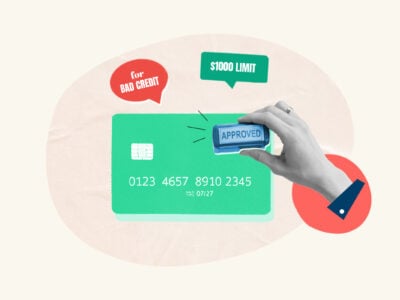Not all credit cards are created equal, and credit card credit limits can range from $100 to tens of thousands of dollars. How much your Discover line of credit is worth makes a big difference—both for your monthly spending and your credit score.
If you’re the owner of a Discover credit card, you may be eligible to increase your credit line and reap the benefits. Learn how to score a Discover credit limit increase and why it matters.
Table of Contents
Is your Discover credit card eligible for a credit limit increase?
Your Discover credit card is eligible for a credit limit increase if your account has been open for at least 6 months.
How to increase your Discover credit limit
There are two ways to get a Discover credit limit increase:
1. Request an increased line of credit
Discover allows you to request a credit limit increase at any time after 6 months of card ownership. To make your request, either:
- Log in to your online account and follow instructions for submitting a credit limit increase request.
- Call the number on the back of your card and request an increase.
2. Wait for an automatic increase
Discover periodically reviews your credit card account to determine whether you’re eligible for a credit limit increase.
If Discover decides to raise your line of credit, they’ll notify you via mail and/or email.
What to do if you’re denied a credit limit increase
The customer service team at Discover disclosed the following as possible reasons your credit limit increase request might be denied:
- Overall credit standing
- Late payments
- High credit card balances
If your request for a credit limit increase has been denied, take the following steps, then try to re-request an increase in 6 months:
- Use your card regularly and responsibly.
- Pay your bills on time.
- Pay down your current balance.
- Raise your credit score (if your request was denied based on your credit score, Discover will send you a letter explaining that and include your current credit standing).
- Check your credit report for errors and dispute any mistakes immediately.
- Wait 6–12 months before requesting another credit limit increase on any of your credit cards (including non-Discover cards).
Why credit limit increases are important
Having a higher credit limit is great if you need a little more room to finance your monthly expenses. And, if used wisely, a higher credit limit on your Discover card can also help your credit score.
That’s because higher credit limits change the equation for your credit utilization rate. Credit utilization is how much credit you’re using at a time. The rate is calculated by dividing your total balance across your credit cards by your total credit limit:
Credit utilization = balance / credit limit
Credit utilization is a major factor in your credit score, with a lower rate being better. If you keep your spending on your Discover credit card the same but raise your overall credit limit, your credit utilization rate will be lower (which is good news for your credit score).
Here’s an example of how a $3,000 Discover credit limit increase can change your utilization rate:
| Credit limit | Outstanding balance | Credit utilization calculation | Credit utilization rate | |
|---|---|---|---|---|
| Before increase | $5,000 | $2,000 | $2,000 / $5,000 ÷ 0.4 | 40% |
| After increase | $8,000 | $2,000 | $2,000 / $8,000 ÷ 0.25 | 25% |
In the example, the increased credit limit pushed the borrower’s credit utilization ratio under the maximum recommended rate of 30%, which may result in an improvement in their credit score.
Will requesting a Discover credit limit increase hurt my credit?
No. Making a request for a credit limit increase sometimes has the potential to hurt your credit, depending on whether the issuer checks your credit through a hard inquiry.
Discover does not check your credit through a hard inquiry, so requesting an increased Discover credit line will not have a negative impact on your credit score.






